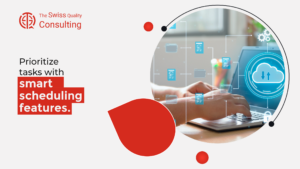Enhancing AI Model Performance Through Learning Rate Scheduling
The Importance of Learning Rate in AI Model Training
Particularly within the thriving business environments of Saudi Arabia and the UAE, optimizing AI model training is crucial for maintaining a competitive edge. One of the most critical factors in this optimization process is the learning rate, which determines how quickly an AI model updates its weights in response to errors during training. Setting the right learning rate is a delicate balance; too high a rate can lead to overshooting the optimal solution, while too low a rate may result in slow convergence or getting stuck in local minima.
Learning rate scheduling techniques have emerged as a powerful tool to optimize this process, allowing models to adjust their learning rates dynamically during training. This adaptability is particularly valuable in industries such as finance, healthcare, and management consulting in Riyadh and Dubai, where AI-driven insights must be both accurate and timely. By leveraging learning rate schedules, businesses can ensure that their AI models are trained more efficiently, leading to faster and more reliable outcomes that support critical decision-making processes.
For business leaders and executives, understanding the role of learning rate scheduling in AI model training can provide a strategic advantage. By implementing these techniques, companies can improve the performance of their AI systems, leading to better predictions, more accurate risk assessments, and ultimately, greater business success in competitive markets.
Types of Learning Rate Schedules and Their Applications
There are several types of learning rate schedules that businesses can leverage to optimize the training of AI models. One of the most commonly used techniques is step decay, where the learning rate is reduced by a factor at predetermined intervals during the training process. This method is particularly effective in scenarios where the initial learning rate is set high to make rapid progress in the early stages of training, with gradual reductions to fine-tune the model as it approaches an optimal solution.
Another popular technique is exponential decay, where the learning rate decreases exponentially over time. This approach allows the model to start with a relatively high learning rate, enabling it to explore the solution space more broadly before gradually focusing on more promising areas. Exponential decay is often used in industries like finance and healthcare, where models must quickly adapt to complex and dynamic data patterns.
Cyclical learning rates offer a different approach by allowing the learning rate to fluctuate between two boundaries throughout the training process. This method can help models escape local minima and potentially discover better solutions. Cyclical learning rates are particularly useful in projects involving large datasets, such as customer behavior analysis or predictive maintenance, where finding the global optimum is critical for delivering accurate and actionable insights.
Implementing Learning Rate Scheduling in Business AI Models
For businesses in Saudi Arabia, the UAE, and across the Middle East, implementing learning rate scheduling in AI models can lead to significant improvements in model performance and training efficiency. By selecting the appropriate learning rate schedule based on the specific needs of the project, companies can ensure that their AI models are optimized for accuracy and speed, enabling them to respond more effectively to market demands and changes.
Moreover, learning rate scheduling can be integrated seamlessly into existing AI frameworks, making it accessible to businesses at various stages of AI adoption. Whether a company is just beginning its AI journey or looking to enhance its existing models, learning rate scheduling provides a straightforward yet powerful tool for improving model training. This is particularly important in fast-paced markets like Riyadh and Dubai, where staying ahead of the competition requires constant innovation and optimization.
In conclusion, learning rate scheduling is a key technique for optimizing the training of AI models, offering businesses a way to enhance the accuracy, efficiency, and reliability of their AI-driven solutions. By understanding and implementing different learning rate schedules, companies in Saudi Arabia, the UAE, and beyond can leverage AI to drive innovation, improve decision-making, and achieve greater business success.
#LearningRateScheduling #AIOptimization #BusinessSuccess #MachineLearning #AIinBusiness #Riyadh #Dubai #ExecutiveCoaching #ChangeManagement #GenerativeAI













